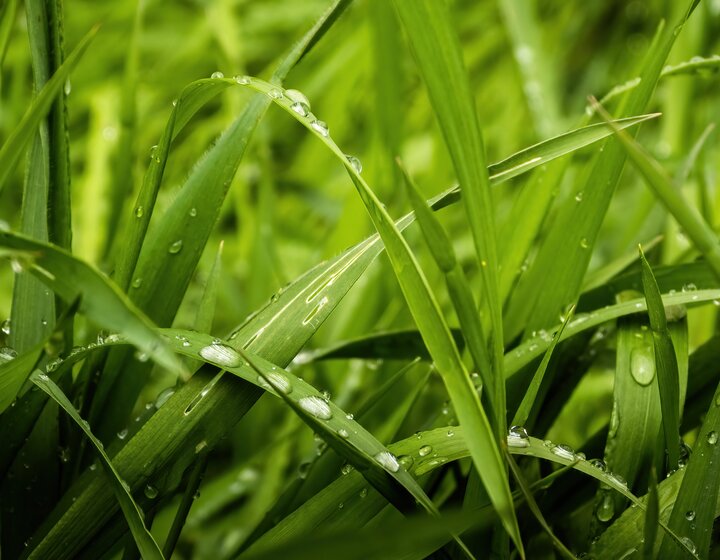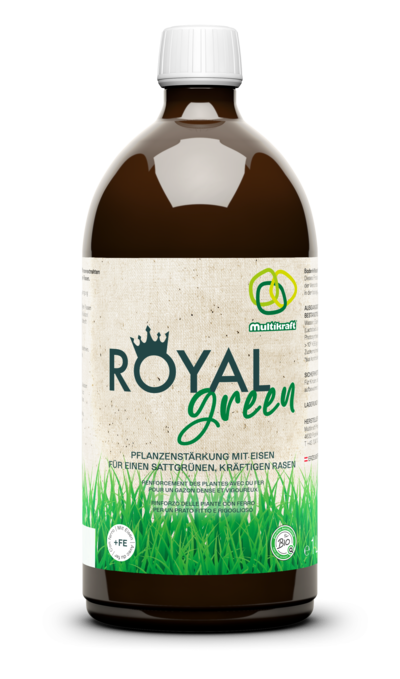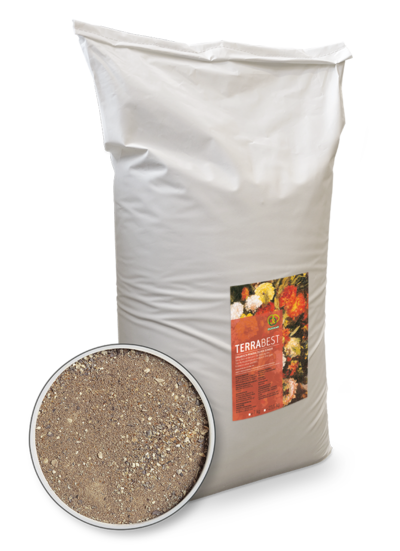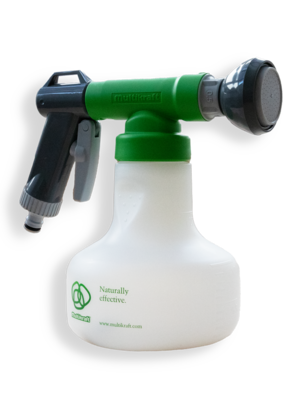The benefits of our soil activator for lawns
Gentle lawn care
At Multikraft, we attach great importance to naturally strengthening and nourishing your lawn. That's why our Royal Green soil activator promotes the sustainable development of your lawn without using any harmful chemicals.
Vitality in the soil
Royal Green strengthens your green space right from the start and supports the development of a dense lawn and strong root system. For complete lawn care, in addition to using soil activators, targeted treatment with an organic lawn fertilizer is also important.
Rich colors
Regular treatment with Royal Green actively suppresses moss growth. What's more, it lays the foundation for even grass growth, contributing to a lush, vibrant green lawn.
Discover Effective Microorganisms for your lawn
Questions and answers
In this FAQ section, you will find specific information and answers on the topic of lawn care. If you cannot find what you are looking for here, please visit our blog section or fill out our contact form—we will be happy to help you.
Yes, Royal Green combines the strengths of Effective Microorganisms, fermented plant extracts, and iron, and completely avoids harmful chemicals.
Mix 200 ml of Royal Green with 10 liters of water and apply the solution three times a year—in spring, early summer, and fall. We recommend using the Aquamix dispenser (setting 2%). With the correct dosage, the lawn will be optimally supplied with iron.
Iron strengthens the lawn, ensures a deep green color, and supports photosynthesis. A lawn that is well supplied with iron grows denser and becomes more resistant, giving moss less chance to grow.
Yes. For a complete supply of nutrients, the lawn should be treated regularly with an organic lawn fertilizer. Alternatively, our organic lawn fertilizer Terra Best can also be used for spring and summer fertilization.
Pesticides are often chemical agents used to combat pests or diseases. They should only be used in extreme emergencies, as they can be harmful to the environment. Fertilization ensures that the lawn receives a basic supply of nutrients. Plant fortifiers such as Royal Green also boost the vitality of the lawn, promote soil activity, and support the development of a dense, resilient lawn. We explain the detailed differences between the three terms in this very interesting blog article!
Find the perfect soil activator for your lawn
In addition to Royal Green plant fortifier, you will find other natural aids for your garden in our online shop:
- Terra Best is an organic fertilizer that supports the nutrient supply in the soil and the clay-humus complex – ideal for targeted spring and summer fertilization.
- Roots, for example, promotes healthy soil life and the growth of roots and resistance in a wide variety of plants.
- EM ceramic powder acts as a fermentation aid in the soil and compost, while it is used on fruit trees to ensure even fruit growth.
- Other highlights of our plant fortifier range include Plants, Flowers, and MoorKraft. See for yourself and take a look at our wide range of products!

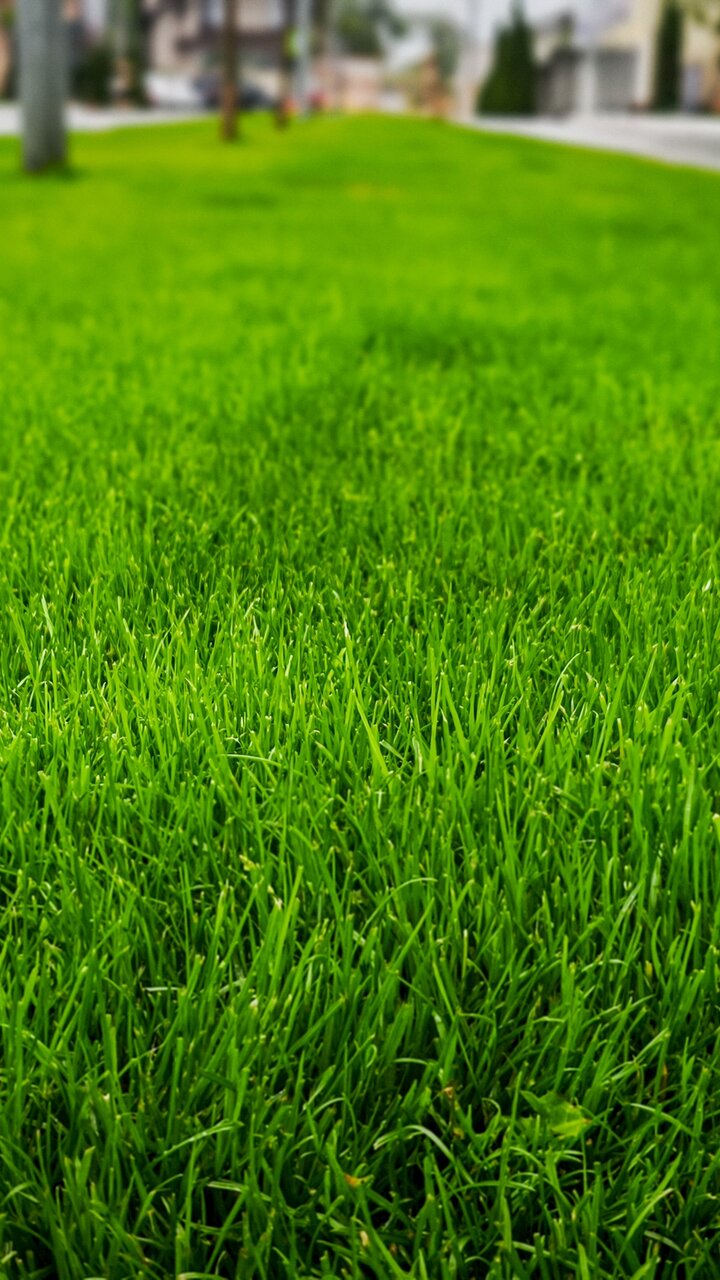
Tips and tricks for a thick, lush green lawn
A soft, dense lawn not only feels pleasant, but its appearance also contributes significantly to the overall look of your oasis of well-being. The good news is that you too can have a beautiful, lush lawn in your garden—without the use of chemicals. Just follow our tips:
- Make sure your lawn gets enough sunlight and fresh air.
- Scarifying and raking contribute significantly to the vitality of the lawn.
- Mow regularly – ideally once a week. The ideal grass height is approximately four to five centimeters.
- Make sure—especially in summer—to water your lawn early in the morning or in the evening to prevent excessive evaporation.
- In addition, use Multikraft plant strengtheners, as these are natural and contain no synthetic additives. Discover the power of effective microorganisms!
- If you would like to treat your green space additionally, then rely on Royal Green with iron. All ingredients are gentle on you and nature!
Would you like to learn more about the proper care of your lawn? We have summarized further practical tips on excellent lawn care for you.
Blog
Interesting facts about your lawn

A healthy, green lawn is not only a beautiful place to play and relax, but also an important design element. To keep it robust, soft, and a lush green, there are a few things to keep in mind. In this article, we give you practical tips for proper lawn care and show you how to get your garden in top shape for the long term!

With the right care, plant strengthening and balanced fertilisation, ideal conditions are created for healthy, robust plants – without the use of harmful chemicals. We show the difference between plant strengthening and fertilisation and the advantages they offer compared to the use of pesticides.
Do you still have questions?
Are you interested in one of Multikraft's products, but are still unsure and would like to find out more?
Our experts will be happy to help you!

